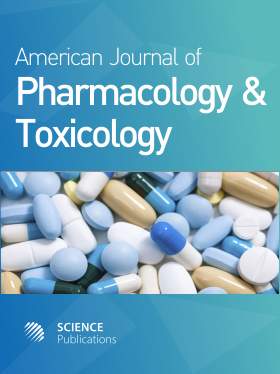Anti-Inflammatory, Analgesic and Antioxidant Activities of Allophylus Cobbe Leaves
- 1 North South University, Bangladesh
- 2 , Bangladesh
Abstract
Allophylus cobbe L. Raeuschel (Family-Sapindaceae) is a medicinal plant used traditionally for the treatment of various health risks like pain, inflammation, ulcers and wounds in Bangladesh. This study determined the polyphenolic compounds and evaluated the analgesic, anti-inflammatory and antioxidant effects of the ethanol extract of Allophylus cobbe leaves. High Performance Liquid Chromatography (HPLC) analysis was used to determine the polyphenolic compounds present in the extract. The analgesic activity was evaluated by hot plate and acetic acid induced writhing in mice at two different doses of 250 and 500 mg kg-1 body weight. The extract was also investigated for the anti-inflammatory effect on rats at above mentioned doses using carrageenan induced rat paw edema method. The antioxidant potential of the extract was determined in terms of radical scavenging ability of the stable 1, 1-Diphenyl-2-Picrylhydrazyl (DPPH) free radical. Preliminary phytochemical analysis revealed the presence of alkaloids, flavonoids, tannins and glycosides in the extract. High Performance Liquid Chromatography (HPLC) analysis also confirmed the presence of polyphenolic compounds such as (+)-catechin hydrate, (—)-epicatechin, caffeic acid, p-coumaric acid and quercetin. The extract increased the licking time of hind paw when placed on a hot plate by 35.31% at 250 mg kg-1 dose which is comparable to the increase shown by diclofenac sodium (42.73%) at the 3rd h of study in hot plate test. Moreover, the extract also showed good analgesic effect in acetic acid induced writhing test. The percent inhibition of writhing response by the extract was 85.96 and 78.07% at 250 and 500 mg kg-1 doses respectively while that of the standard drug was 66.67%. Furthermore, the extract also reduced carrageenan induced paw edema formation; the most prominent inhibition was found to be 58.88% (250 mg kg-1) at the 3rd h of study. The DPPH radical scavenging activity of the extract increased markedly with increasing concentrations. At a concentration of 200 µg mL-1, the scavenging activity of the ethanol extract (91.53% inhibition) was comparable to that of the standard ascorbic acid (99.3% inhibition). Our results suggest that Allophylus cobbe extract possesses significant antinociceptive, anti-inflammatory and free radical scavenging activities which may justify the folkloric use of the plant in several communities for conditions such as colic, fever, inflammatory rheumatic pains and other oxidative stress associated disorders.
DOI: https://doi.org/10.3844/ajptsp.2014.223.231

- 4,360 Views
- 3,382 Downloads
- 1 Citations
Download
Keywords
- Phytochemical Screening
- Acetic Acid
- Medicinal Plant
- Carrageenan
- Analgesia
- HPLC
